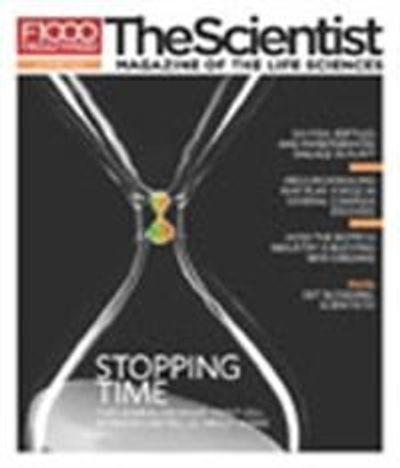Shrinking birds

Global temperatures have risen an average of 0.6 degrees Celsius in the last century. What effect that may have on the planet’s species is hard to predict, but a recent paper evaluating data from more than 100 different bird species over the past 5 decades found that many of them have shrunk in size. F1000 Faculty Member and evolutionary biologist at the University of Melbourne, Ary Hoffmann, talked about what this may mean in the long run (Oikos, 119:1047–55, 2010).
TS: Naturalists have long observed that species tend to get smaller if they live in warmer areas. Robert Leberman and colleagues from the University of Zürich used this observation to hypothesize that as the Earth warms up, birds that either resided in or made pit...
AH: Organisms are getting smaller. So it does look like there are these general patterns in size that seem to be related to conditions getting warmer in particular. I think what’s really nice about this study is the number of species that were actually showing the same patterns. Previously people had taken one or two species and shown these kinds of patterns. If you’re trying to establish patterns related to climate change, I think this study does emphasize the fact that you need to look at a large number of species—simply because we know there is a wide range of factors that can actually influence size, such as food availability. The surprise is that you’re seeing these consistent patterns across a large number of species.

TS: The authors used measurements of the bird’s fat-free mass and wing length at different times of the year starting in the 1960s. They found that both features changed in relation to the temperatures recorded in the previous year. Why is this happening?
AH: If the summer temperature increased the previous year, there was a decrease in size. That would seem to suggest that as it gets warmer, then the smaller birds have some advantage, or at least the summer temperatures are producing smaller sizes.
They do speculate on a couple of things, but I’m not sure if the evidence is that good yet to actually say that it’s for a particular reason. We do seem to know that selection is acting in that direction but that doesn’t mean we know what the mechanism of selection actually is.

TS: Is the change in size the result of evolution, of genetic change, or does it just represent a phenotypic adaptation to a changing environment?
AH: The same genotype can show different phenotypes in response to different environments. On the other hand, you can also get a situation where the shift might be genetic. To separate those two, you need to do controlled experiments and those are generally quite hard to do in birds. In this particular case, the author suggests that it might be genetic. They say that the bird populations themselves haven’t declined and the food supply doesn’t seem to obviously [be in] decline, so it may well be the case that these are genetic changes. But until you do those controlled experiments, then you won’t really know whether it’s going to be genetic or environmental.
TS: Is there any inkling as to whether these changes are good or bad for these species?
AH: The fact that this selection seems to be favoring small birds and that the birds are getting smaller both suggest that the decrease in size is an adaptive response, particularly when you can show on top of that that the size of the population is not decreasing. I think it’s good for these birds in that sense. But the problem is to what extent can you keep adapting in that way? If it keeps getting warmer, and you keep having to select for small size, then eventually you’re going to certainly expect to see the consequences of that. Eventually you might come to some sort of limit that you can’t exceed, and then you start potentially to see decline.
Hoffmann’s lab studies the ability of populations, particularly of insects, to adapt to climate change. You can access his review of the paper here.
Interested in reading more?




